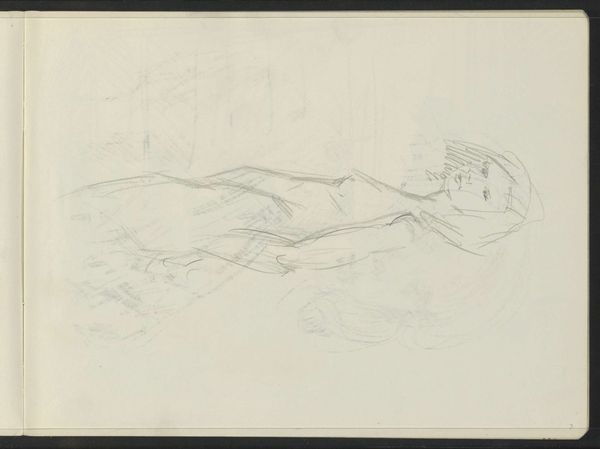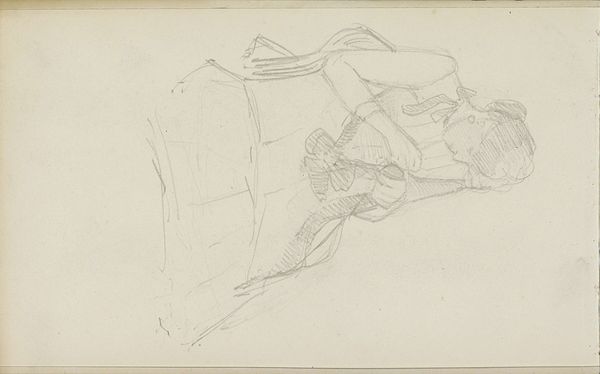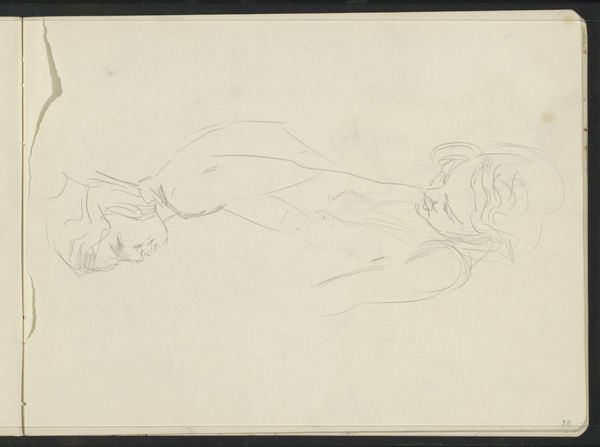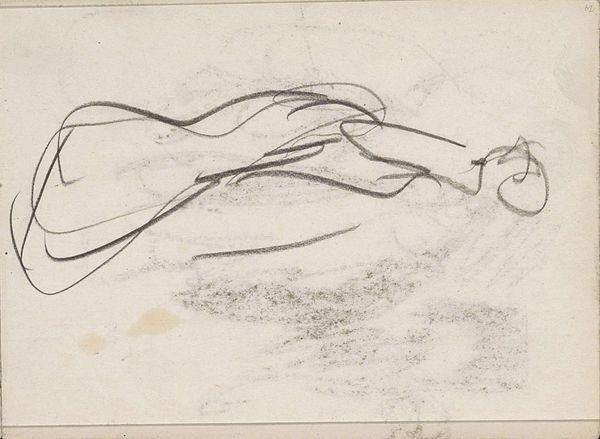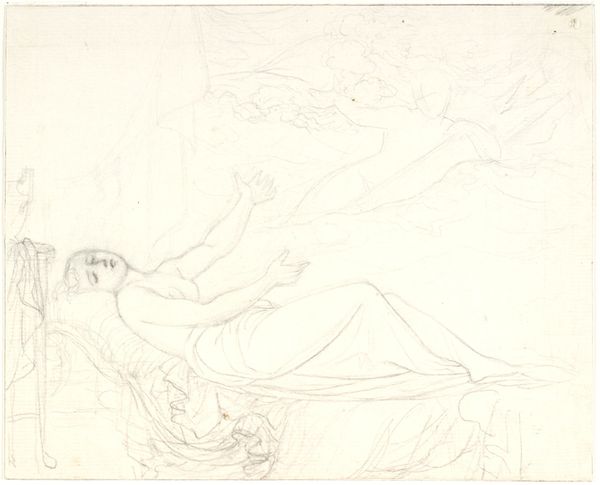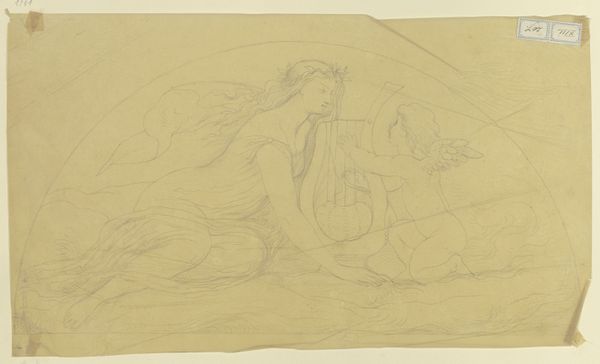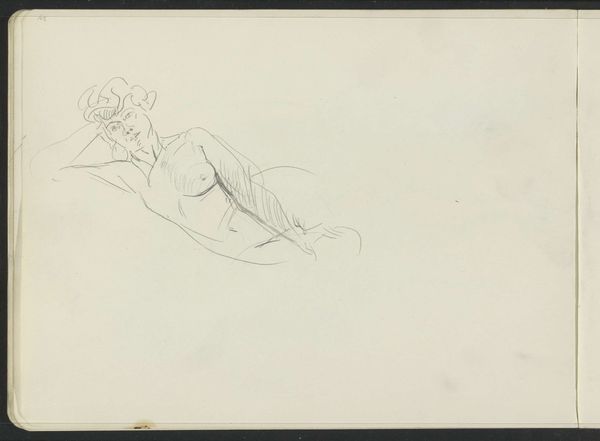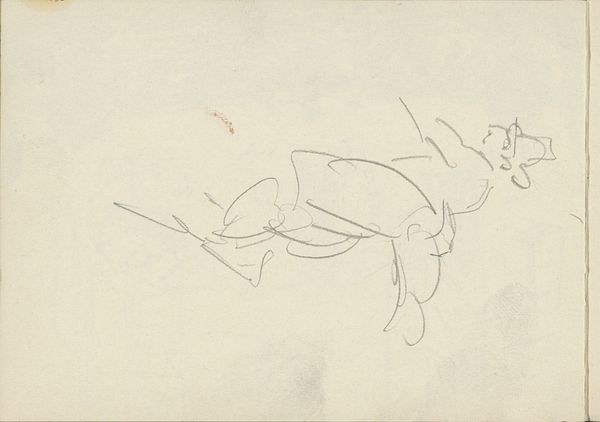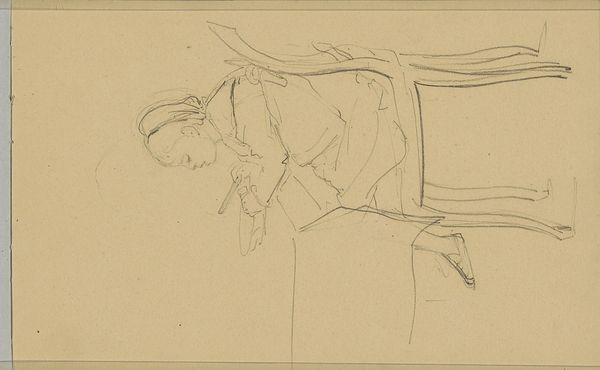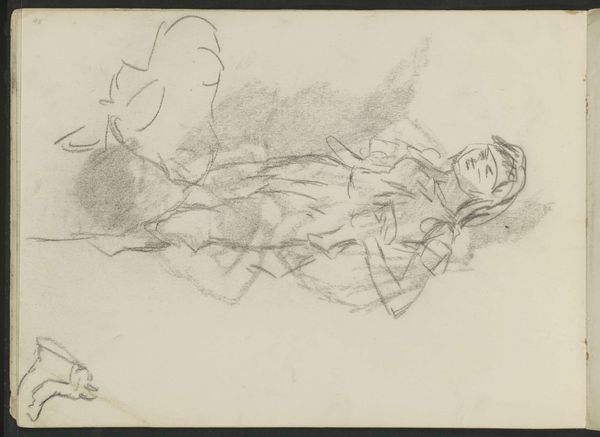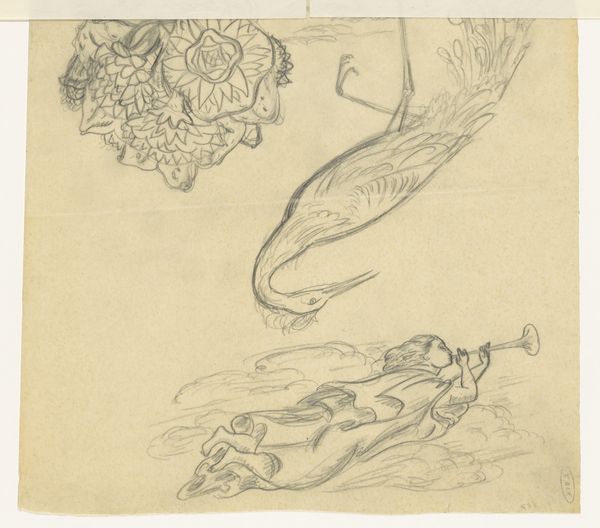
Dimensions: plate: 12.5 x 21.9 cm (4 15/16 x 8 5/8 in.) sheet (program closed): 17.1 x 27.5 cm (6 3/4 x 10 13/16 in.) sheet (program opened): 17.1 x 54.8 cm (6 3/4 x 21 9/16 in.)
Copyright: National Gallery of Art: CC0 1.0
Editor: This is a pencil sketch from 1894 by Edward Burne-Jones, entitled *La Belle au bois dormant*. It looks like a preparatory drawing of Sleeping Beauty. The delicacy of the lines and the pose of the figure give it a really dreamlike quality. What are your initial thoughts about it? Curator: This drawing reflects a very specific cultural moment. Burne-Jones was a key figure in the Pre-Raphaelite movement, and their work offered an escape from the industrialized world by romanticizing the medieval period and using subjects rooted in mythology, literature, and folklore. Considering that, what do you think their artistic and political choices might say about society in Victorian England? Editor: Well, maybe they saw industrialization as dehumanizing, so they wanted to revive what they viewed as a more authentic, pre-industrial past with themes of beauty and enchantment? Curator: Exactly! And this fascination wasn’t apolitical. The medieval past represented a period often idealized as one of social harmony. Burne-Jones and others were often critics of contemporary capitalist society, which they felt was destroying that perceived harmony. Does this sketch change how you see the finished painting? Editor: Definitely. Knowing the socio-political context adds so much more depth. It’s not just about illustrating a fairy tale, but about making a statement on society. Curator: Precisely. These choices influenced both their artistic style and thematic choices. We must remember the role of institutions like the art market in elevating and popularizing such subjects as a form of cultural commentary, even implicit critique, that reflected anxieties in Britain's transition to modern capitalism. What would you say you’ve gained from looking at it from this point of view? Editor: That art is not created in a vacuum. Understanding the historical and cultural context gives the artwork even greater meaning. Curator: And remember, studying art allows us to learn about the broader context, allowing us to develop a better understanding of art’s place in society.
Comments
No comments
Be the first to comment and join the conversation on the ultimate creative platform.



